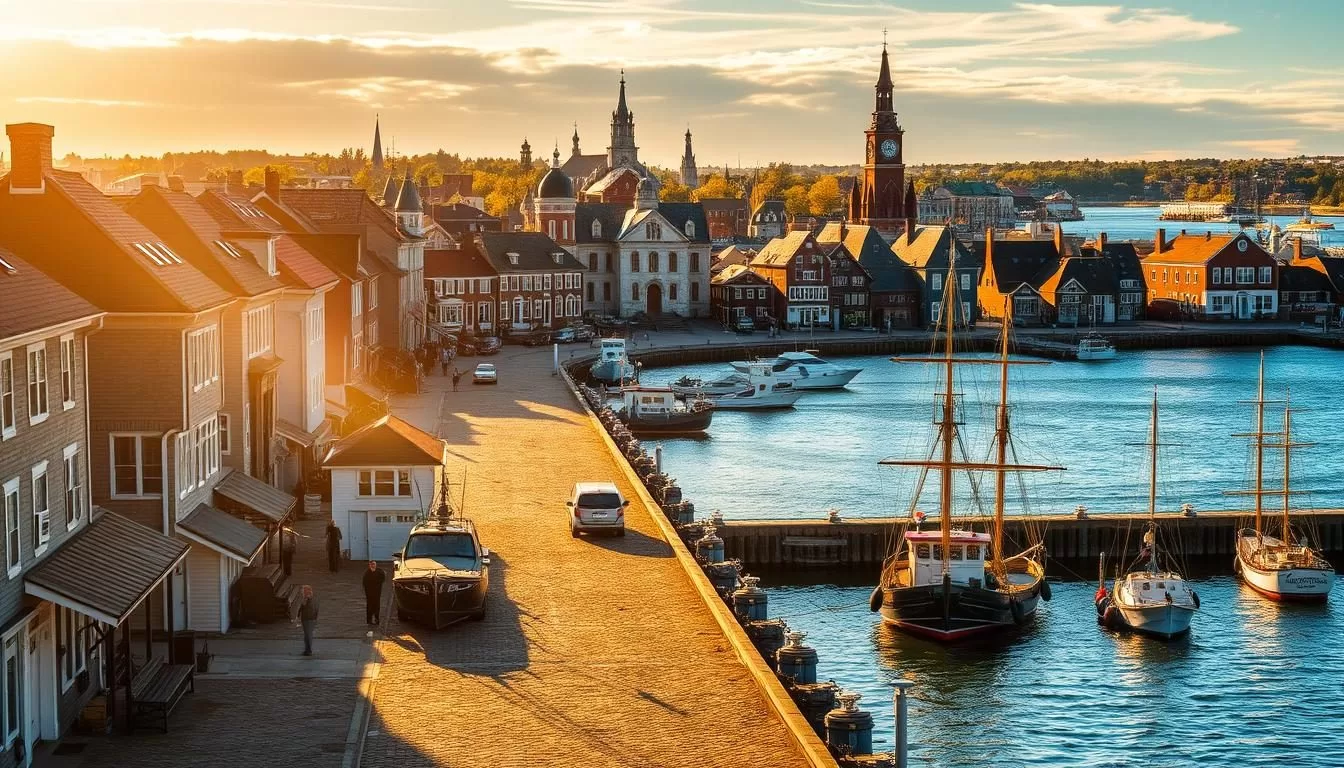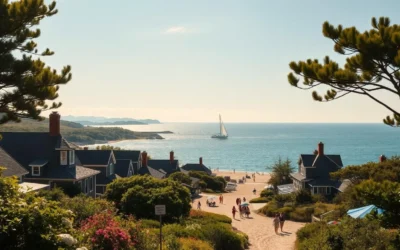You’re in for a treat when you visit New Bedford, a historic coastal city in New England with a rich maritime history. Once the whaling capital of the world, this place has transformed into a modern fishing hub and cultural destination.
As America’s most profitable fishing port, primarily due to its scallop industry, New Bedford offers a unique blend of time-honored traditions and modern attractions. You’ll find a diverse range of things to see and do in this vibrant area, from historic sites to cultural venues, museums, and dining options.
Whether you’re a history buff, an art enthusiast, a foodie, or just looking for a great day trip or weekend getaway, New Bedford has something for everyone. As a designated National Historical Park, this city is a must-visit destination that promises an unforgettable experience.
The Rich History of New Bedford: America’s Whaling Capital
As you explore New Bedford, you’ll uncover a rich history that made it the whaling capital of America. New Bedford’s strategic location on the coast, coupled with its deep harbor, made it an ideal base for the whaling industry. During the 19th century, New Bedford was at the forefront of the American whaling industry, with nearly 450 whaling vessels operating from its port at the industry’s peak.
The city’s prosperity during this period was unparalleled. New Bedford was known as “The City That Lit the World” due to the high-quality, smokeless spermaceti (whale oil) produced there. This wealth is reflected in the city’s architecture and the number of millionaires it produced during the whaling era – more than any other American city at the time.
From Whaling City to Fishing Hub
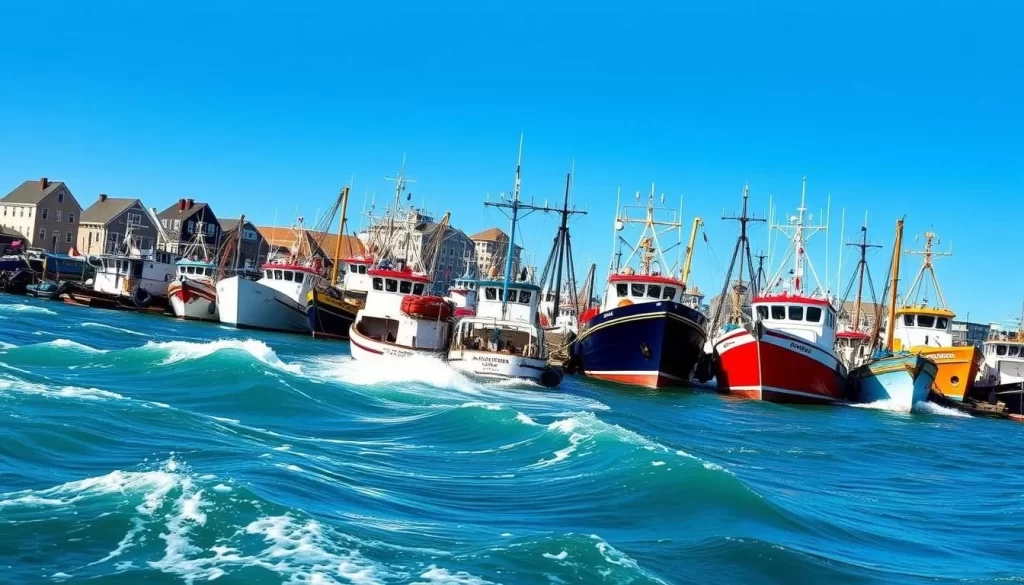
As the whaling industry began to decline with the discovery of petroleum, New Bedford adapted by transitioning into textile manufacturing. The Wamsutta Mill, which opened on the banks of the Acushnet River, became a symbol of this new industry. However, the city’s connection to the sea remained strong, and it eventually became a major commercial fishing hub.
Today, New Bedford is recognized as the scallop capital of the world, with its seafood auction setting the global price for scallops. The city’s evolution from a whaling to a fishing hub demonstrates its resilience and ability to adapt to changing economic conditions.
The multicultural aspect of New Bedford’s history is also noteworthy. The whaling industry brought many immigrants to the city, including a significant number of Portuguese, who have had a lasting impact on the city’s culture. This diverse heritage continues to be celebrated in New Bedford’s cuisine, festivals, and community events.
Literary Connections: Herman Melville and Moby Dick

New Bedford’s influence extends beyond its economic and cultural contributions; it has also left its mark on American literature. Herman Melville, the renowned author of Moby Dick, spent time in New Bedford aboard the Acushnet whaling ship. His experiences in the city and on the ship significantly influenced his writing, with New Bedford being immortalized in the opening chapters of Moby Dick.
Melville described New Bedford as “perhaps the dearest place to live in all New England,” a testament to the city’s charm and allure. The Seamen’s Bethel, a church mentioned in Moby Dick, still stands today, serving as a reminder of the city’s literary connections and its role in shaping one of America’s most iconic novels.
The legacy of New Bedford’s whaling history, its transition to a fishing industry, and its literary connections all contribute to its unique identity. As you delve deeper into the city’s history, you’ll discover why New Bedford remains a fascinating destination for those interested in history, literature, and the sea.
New Bedford Whaling Museum: A Must-Visit Attraction
With over 750,000 artifacts, the New Bedford Whaling Museum is a must-visit destination for anyone fascinated by maritime culture. As you explore this iconic museum, you’ll uncover the rich history and significance of whaling in New Bedford.
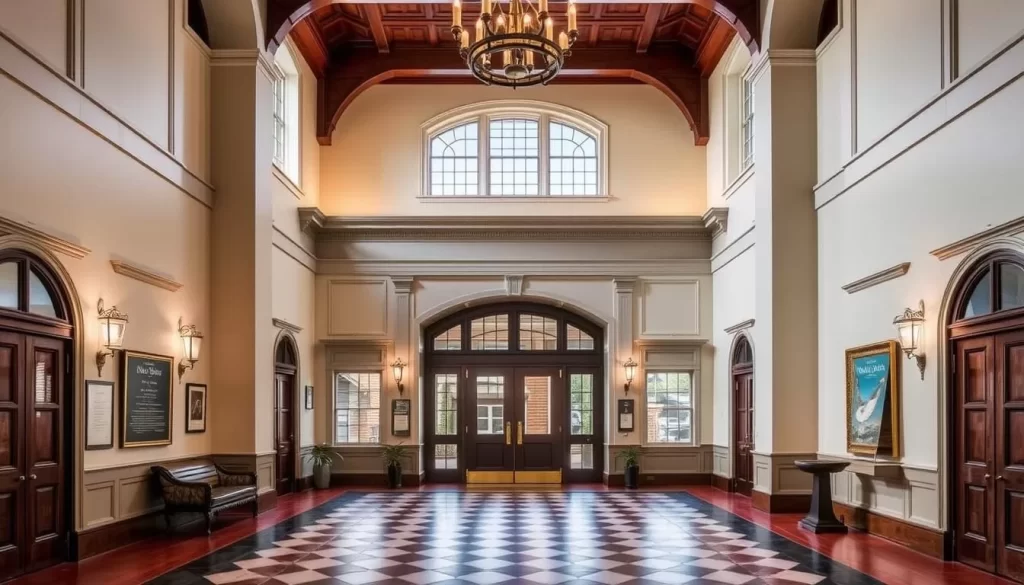
Impressive Whale Skeletons and Exhibits
One of the museum’s most striking features is its collection of fully articulated whale skeletons suspended from the ceiling. You’ll be awestruck by the sheer scale and detail of these exhibits, including a juvenile Blue Whale and a North Atlantic Right Whale with her fetus.
The museum’s exhibits not only showcase the biology and majesty of whales but also tell the story of the whaling industry’s impact on the environment and local communities.
The Lagoda: World’s Largest Ship Model
A highlight of the museum is the Lagoda, the world’s largest ship model, built at half-scale by aging shipwrights in 1916. This impressive model gives visitors a glimpse into the construction and operation of whaling ships during the 19th century.
You can explore the Lagoda up close, gaining a deeper understanding of the craftsmanship and challenges faced by sailors and shipbuilders of the time.
Scrimshaw Collection and Maritime Artifacts
The New Bedford Whaling Museum is also home to the world’s largest collection of scrimshaw, a unique form of folk art created by whalers on whale teeth and bones. The intricate carvings on display offer a fascinating insight into the lives of sailors during their long voyages.
In addition to scrimshaw, the museum houses a vast array of maritime artifacts, including navigational tools, harpoons, and other equipment used in the whaling industry. These exhibits provide a comprehensive look at the tools and techniques used by whalers.
As you explore the New Bedford Whaling Museum, you’ll gain a deeper appreciation for the complex history of whaling and its ongoing impact on marine conservation efforts today.
New Bedford Whaling National Historical Park
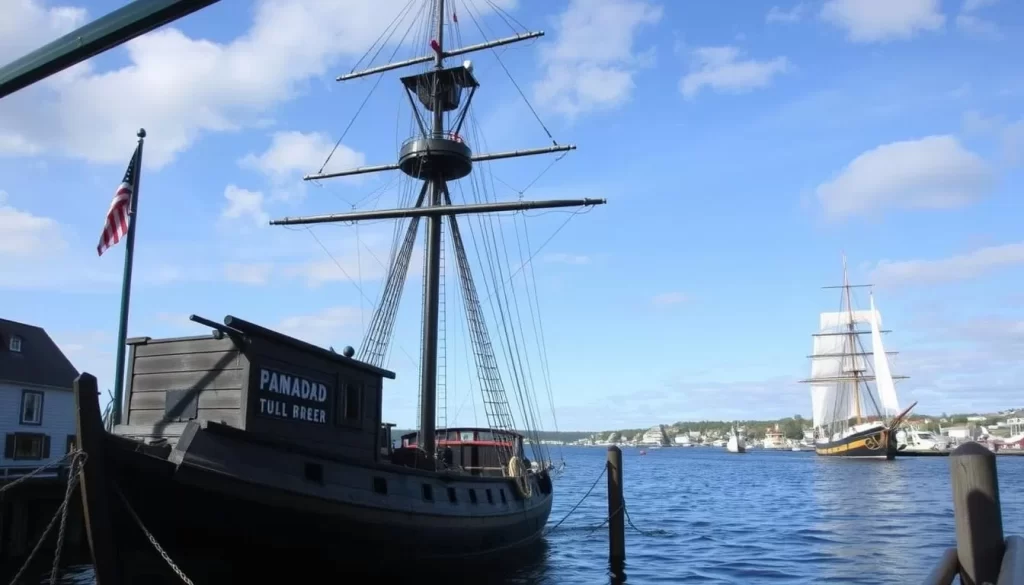
As you step into the New Bedford Whaling National Historical Park, you’re about to uncover the fascinating story of America’s whaling industry. Established by Congress in 1996, this 13-acre park is recognized as the best place in America to tell the story of whaling.
Visitor Center and Guided Tours
Begin your visit at the Visitor Center, where a 22-minute movie, “The City That Lit the World,” awaits. The exhibits here delve into various aspects of whaling life, including “The Lure of Whaling,” “Life in a Port City,” “Faces of Whaling,” and “Women in Whaling.” From here, you can embark on a free 45-minute guided walking tour that brings the city’s diverse history to life.
These walking tours are not just any ordinary walks; they are narrated journeys that focus on the History of Whaling, Herman Melville’s connections to the city, and the Underground Railroad. The guides are knowledgeable, providing insights that make the history of New Bedford vivid and engaging.
Historic Buildings and Cobblestone Streets
As you wander through the historic district, you’ll be surrounded by well-preserved 19th-century architecture. The cobblestone streets add to the authenticity of the experience, transporting you back to the era when New Bedford was a thriving whaling city.
The historic buildings and streets are not just relics of the past; they are living testaments to the city’s rich history. You can almost hear the echoes of the past as you stroll through the streets, imagining the bustling activity that once characterized this whaling hub.
Underground Railroad History
New Bedford played a significant role in the abolitionist movement, thanks to its large Quaker community. The city’s history as a haven for escaped slaves is a poignant aspect of its story. Frederick Douglass and his wife Anna, who fled from slavery, found refuge in New Bedford, where Douglass worked various jobs before becoming a prominent abolitionist leader.
The Underground Railroad history is a powerful reminder of the city’s commitment to freedom and equality. The narratives of those who escaped slavery and found solace in New Bedford are a testament to the city’s role in shaping American history.
In conclusion, the New Bedford Whaling National Historical Park is a must-visit destination for anyone interested in American history, maritime culture, or the story of whaling. With its rich history, guided tours, and historic architecture, it offers a comprehensive and immersive experience.
Seamen’s Bethel and Mariners’ Home

New Bedford’s Seamen’s Bethel is a place where history and literature entwine, thanks to its connection to Herman Melville’s Moby Dick. This historic house of worship was built in 1832 by local Quakers to serve the spiritual needs of sailors. As you step inside, you are surrounded by the rich maritime history of New Bedford, a city that was once America’s whaling capital.
The Real-Life Whalemen’s Chapel from Moby Dick
The Seamen’s Bethel is famously known as “The Whalemen’s Chapel” in Herman Melville’s classic novel. The building underwent a significant $3.2 million renovation in May 2017 to save it from collapse. During the renovation, construction workers removed stucco from the exterior walls, revealing the original pre-Melville stone. A modern breezeway now connects the Bethel to the adjacent Mariners Home, serving as the Church’s new main entrance. The reception desk in the breezeway is made from 150-year-old lumber reclaimed from the renovation.
One of the most striking features inside the Bethel is the bow-shaped pulpit, from which Reverend Enoch Mudge, the inspiration for Father Mapple in Moby Dick, delivered sermons to sailors between 1832 and 1844. You can sit in Melville’s actual pew, the second to last row on the left, a spot that has become a photo opportunity for many visitors.
Marble Cenotaphs and Maritime Memorials
The sanctuary walls of the Seamen’s Bethel are lined with marble cenotaphs, or “empty tombs,” memorializing men who lost their lives at sea. One of these cenotaphs is believed to have inspired Melville’s character Captain Ahab; it honors Captain William Swain, who was carried overboard by a whale line and drowned on May 19, 1844.
The Seamen’s Bethel continues to serve the fishing community today, maintaining a living connection between New Bedford’s whaling past and its present-day fishing industry. Every Memorial Day since 1866, the 1835 church organ is wheeled down to the waterfront for services honoring fishermen lost at the sea.
Visiting the Seamen’s Bethel offers a unique glimpse into New Bedford’s rich maritime heritage and its literary significance. You can explore the historic building, admire its architectural features, and reflect on the sacrifices made by those who ventured out onto the whaling ships. The adjacent Mariners Home adds another layer to the experience, providing insight into the lives of the sailors who called New Bedford home at one time or another.
New Bedford Fishing Heritage Center
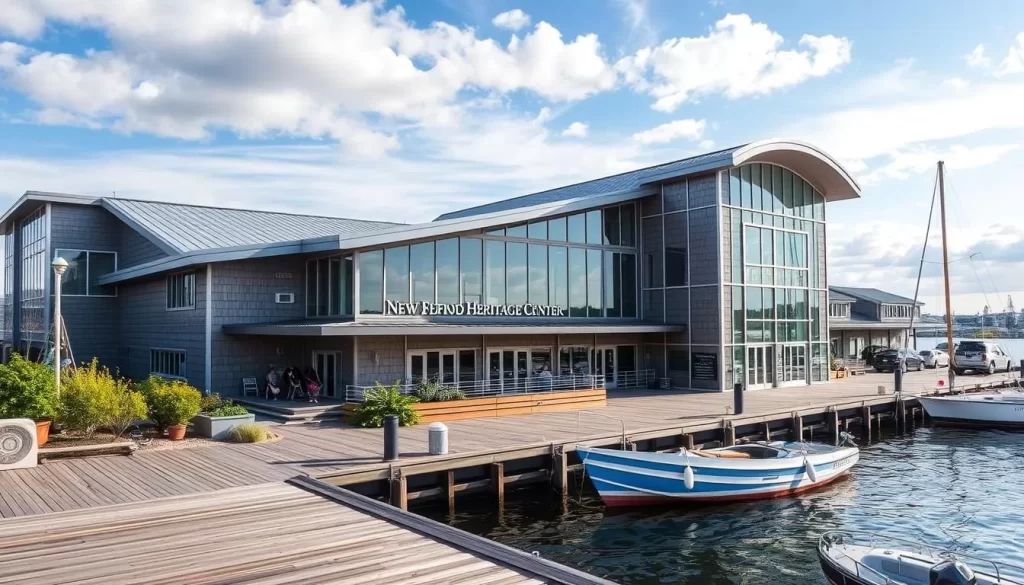
The New Bedford Fishing Heritage Center is an interactive museum that celebrates the city’s fishing industry past, present, and future. What started as a simple office for the annual Working Waterfront Festival has evolved into a permanent educational space that offers a unique glimpse into the life of commercial fishermen.
Hands-on Exhibits and Interactive Displays
You can explore various aspects of fishing life at the center. Watch the construction of a fishing vessel “from keel to launch” and see unusual catches on display. You can also read through a collection of colorful fishermen nicknames and practice tying nautical knots.
One of the most popular activities, especially among teens, is the 60-second challenge to don survival gear. This hands-on experience gives you a realistic understanding of the challenges faced by commercial fishermen.
Modern Fishing Industry Insights
The center also offers insights into the modern fishing industry, with a makeshift wheelhouse featuring a navigational simulator programmed with many American harbors. You’ll even hear authentic radio chatter between bridge and harbor masters, giving you a realistic experience of what it’s like to be on a commercial fishing vessel.
You can also engage with the memorial exhibit that details ships lost at sea and the fishermen who perished. This interactive display is a poignant tribute to those who have lost their lives at sea.
By visiting the New Bedford Fishing Heritage Center, you’ll gain a deeper understanding of the city’s status as America’s most profitable fishing port, with a particular emphasis on the scallop industry. The center is a compact but information-rich museum that perfectly complements the historical whaling exhibits elsewhere in the city.
Plan to spend about an hour at the center, exploring the various exhibits and interactive displays. You’ll leave with a newfound appreciation for the city’s fishing heritage and the industry that drives it.
Waterfront Attractions and Harbor Tours
As you explore New Bedford, you’ll discover that its waterfront is a hub of activity, offering a unique blend of history, culture, and maritime charm. The waterfront area is where the city’s rich history as a whaling and fishing port comes alive, with numerous attractions and activities to enjoy.
New Bedford Harbor Tours
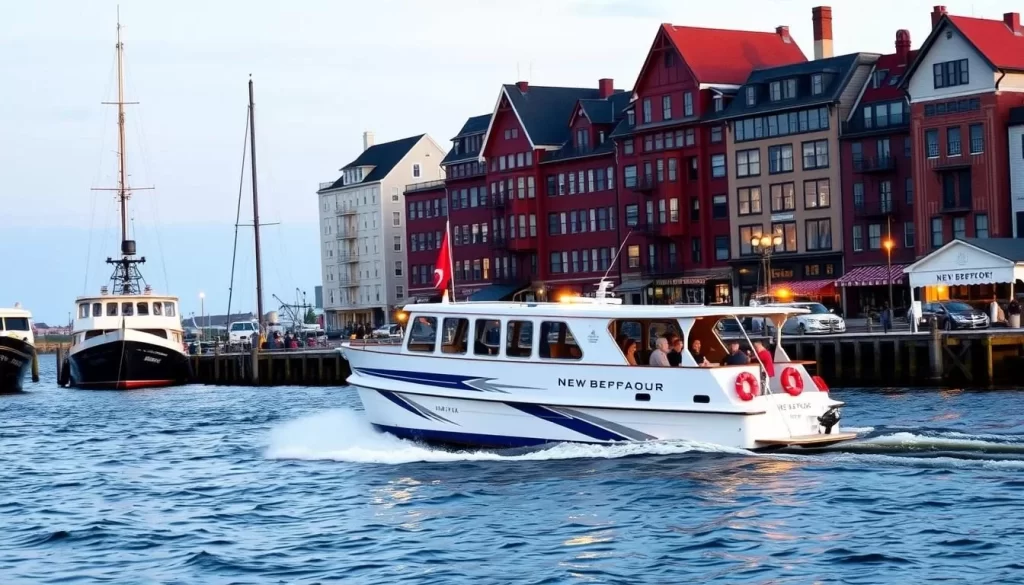
Take a one-hour New Bedford Harbor Tour to gain fascinating insights into the working harbor. You’ll learn about the history of the fishing fleets, including why scallop boats aren’t completely painted, and the immigrant history behind the fleets. If the weather forecast is bad, you might see the entire fleet at the docks, offering a unique viewing opportunity.
The harbor tour is an educational experience that highlights the significance of the maritime industry in New Bedford. You’ll have the chance to get up close to the fishing vessels and learn about their operations.
The Hurricane Barrier and Blue Lane
The Hurricane Barrier, stretching 9,100 feet, is the longest in the world and the largest stone structure on the East Coast. It was designed to protect the harbor from devastating storms. Along the top of this barrier is the Blue Lane, a 4.5-mile waterfront esplanade that connects the Covewalk, Harborwalk, and Riverwalk. This elevated path is not only pet and stroller-friendly but also lit up at night, creating a beautiful waterfront experience.
The Blue Lane enhances the shoreline experience for both residents and visitors, offering continuous access to the waterfront. It’s an ideal place for a leisurely walk or jog, with captivating views of the harbor.
Commercial Fishing Fleet Viewing
New Bedford is home to approximately 200 commercial fishing boats, including scallopers and trawlers, making it America’s most profitable fishing port. Visiting the docks allows you to observe the fishing fleet in action. If you time your visit right, you can watch the boats offloading their catch, providing a glimpse into the modern seafood industry that drives the local economy.
The commercial fishing fleet is a vital part of New Bedford’s identity and economy. Observing the fleet in operation gives you a deeper appreciation for the city’s maritime heritage and its continued importance in the fishing industry.
Historic Mansions and Architecture
As you stroll through New Bedford, you’ll discover a treasure trove of historic mansions and architectural gems. The city’s rich history is palpable in its well-preserved buildings, offering a glimpse into its prosperous past as a whaling capital.
Rotch-Jones-Duff House and Garden Museum
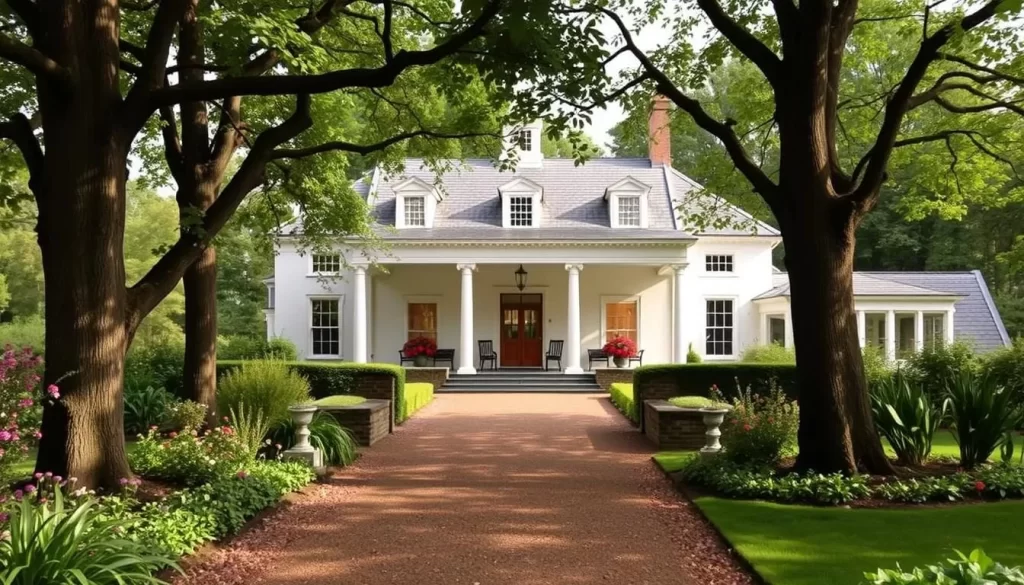
The Rotch-Jones-Duff House and Garden Museum is a stunning example of Greek Revival architecture, built in 1834 for a prominent whaling merchant. This magnificent mansion offers a unique glimpse into the opulent lifestyle of New Bedford’s wealthy whaling merchants during the 19th century.
The gardens are truly enchanting, meticulously maintained to reflect the horticultural styles of the 19th century. As you wander through the property, you’ll appreciate the beauty and tranquility it offers, providing a serene escape from the bustling city.
The Rotch-Jones-Duff House is not just a historic mansion; it’s a window into the past, showcasing the history and culture of New Bedford’s whaling era. With its impressive architecture and beautiful gardens, it’s a must-visit attraction for anyone interested in history, architecture, or simply looking to experience the charm of the past.
Historic District Walking Tour
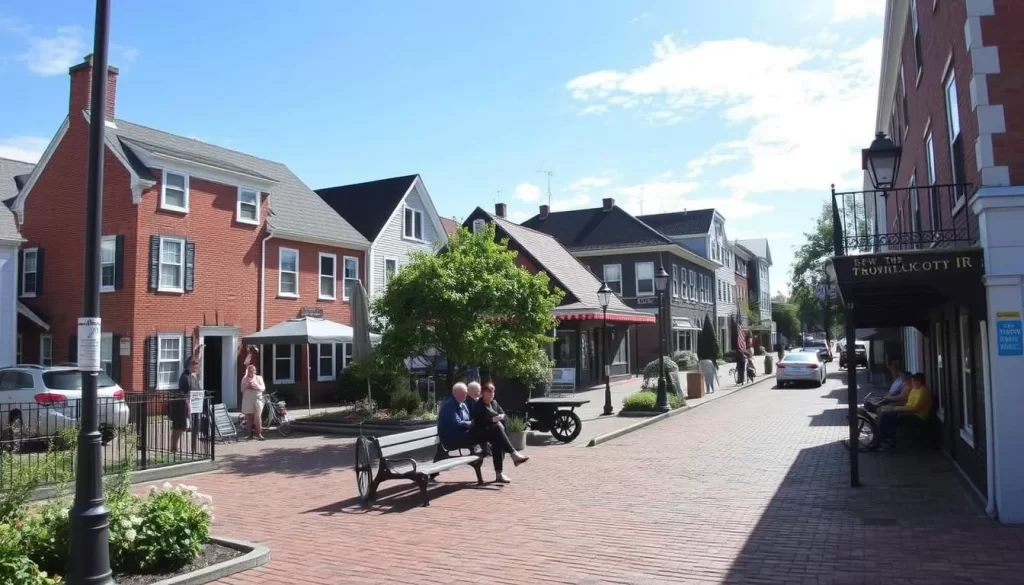
New Bedford’s Historic District is a living museum, with well-preserved 19th-century buildings creating an authentic atmosphere of the whaling era. As you take a self-guided or organized walking tour, you’ll be transported back in time, surrounded by the sights and sounds of a bygone era.
The Waterfront Historic Area League (WHALE), a preservation organization, has played a crucial role in maintaining the authenticity of New Bedford’s landmark buildings. Their efforts have saved numerous historic structures from demolition, sometimes even physically moving them to preserve the city’s architectural heritage.
As you walk through the historic district, you’ll admire the Greek Revival, Federal, and Victorian architectural styles that dominate the area, reflecting the city’s prosperity during the whaling era. Be sure to visit the US Custom House, a Greek Revival building constructed in 1836, which remains the longest continuously operating customs office in the United States.
The cobblestone streets and period lighting enhance the historic atmosphere, making you feel like you’re stepping back in time. New Bedford’s historic district earned its designation as a National Historic Landmark District due to its exceptional preservation of 19th-century architecture, making it a unique and fascinating place to explore.
Art and Culture in New Bedford
New Bedford’s cultural landscape is as diverse and intriguing as its maritime heritage. The city is home to a variety of artistic and cultural attractions that showcase its rich history and its vibrant present.
New Bedford Art Museum
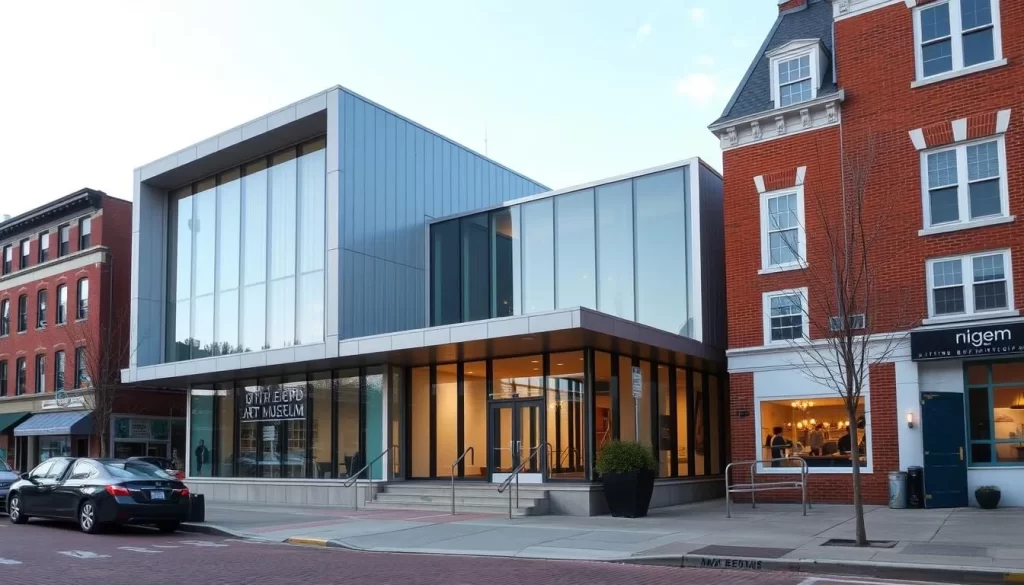
The New Bedford Art Museum is a hub for art lovers, offering an eclectic mix of art year-round within its four gallery spaces. You can experience works by local artists, selections from the city’s historic art collection, and innovative contemporary exhibitions. The museum is committed to engaging the community through participatory and immersive experiences that stimulate all five senses.
The museum serves as a platform for emerging media and art practices, including sound art, olfactory art, and more. Its “Enchanted Evenings” programs combine film, dance, poetry, and music thematically tied to current exhibitions, providing a rich cultural experience.
AHA! (Art, History, Architecture) Nights
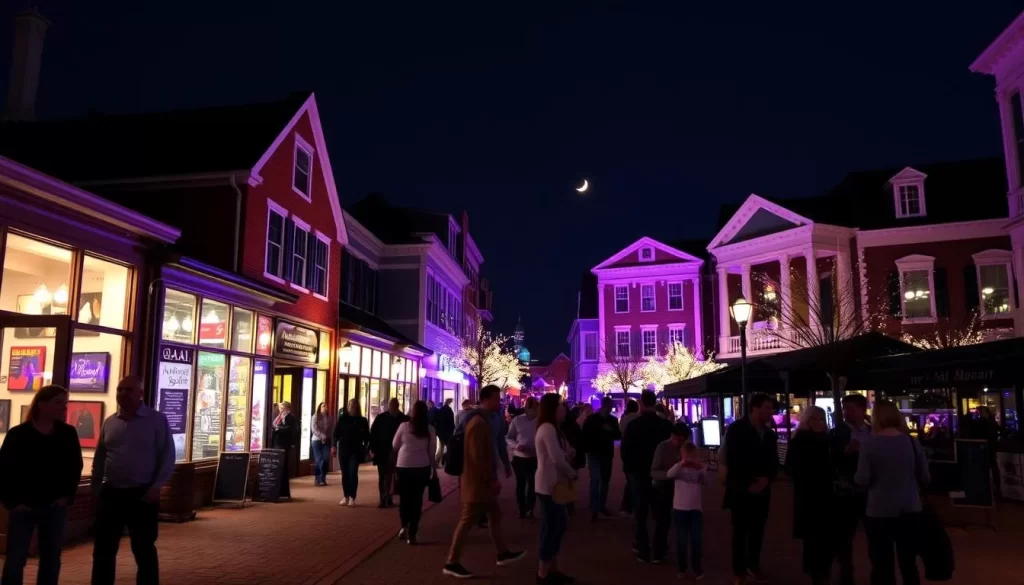
AHA! Nights are a unique opportunity to explore New Bedford’s art, history, and architecture in one evening. Held on the second Thursday of every month, galleries, museums, and cultural venues stay open late with special programming. It’s a perfect way to experience the city’s cultural depth.
During AHA! Nights, you can enjoy extended hours at participating venues, engaging with local artists, and experiencing the city’s historic and architectural landmarks in a new light.
Zeiterion Performing Arts Center

The Zeiterion Performing Arts Center is a cornerstone of New Bedford’s cultural scene, hosting a diverse range of performances including theater productions, ballet, symphony orchestras, and contemporary shows. This historic venue has been beautifully renovated to provide an intimate and engaging setting for both performers and audiences.
Whether you’re interested in classical music, theater, or contemporary performances, the Zeiterion Performing Arts Center offers something for everyone, making it a must-visit destination for anyone interested in the arts.
Fort Taber-Fort Rodman Military Museum

Experience the blend of military history and coastal beauty at Fort Taber-Fort Rodman Military Museum. Located on Clark’s Point in New Bedford, this 50-acre park offers a unique combination of historical significance and natural scenery.
Civil War Era Fortifications
Fort Taber-Fort Rodman Military Museum is home to Fort Rodman, an American Civil War-era fortification built in 1860. As you explore the fort, you’ll uncover its strategic importance in defending New Bedford’s harbor during the Civil War and subsequent conflicts. The fort’s granite structure stands as a testament to the area’s military history.
The fort’s design and construction reflect the era’s military architecture, providing a glimpse into the past. You can walk through the fort’s walls and imagine the historic events that took place here. The site also played a role in the Underground Railroad, adding another layer to New Bedford’s significant role in the abolitionist movement.
Military History Exhibits and Ocean Views
Within the fort complex lies the Military Museum, which features exhibits honoring local veterans and telling their poignant stories of service. As you visit the museum, you’ll gain a deeper understanding of the sacrifices made by those who served. The museum’s exhibits are a must-see for anyone interested in military history.
One of the highlights of visiting Fort Taber-Fort Rodman is the breathtaking view of Narragansett Bay. The fort’s location on Clark’s Point offers panoramic coastal vistas, making it a perfect spot for photography. You can capture the impressive stone architecture of the fort against the backdrop of the bay, creating lasting memories of your visit to this historic place.
After exploring the museum and the fort, take some time to enjoy the surrounding 50-acre park. The hiking and walking trails offer a chance to appreciate the natural beauty of the area, with the coast providing a serene atmosphere. Whether you’re interested in history, nature, or simply looking for a unique experience, Fort Taber-Fort Rodman Military Museum is a great destination in New Bedford.
New Bedford Museum of Glass
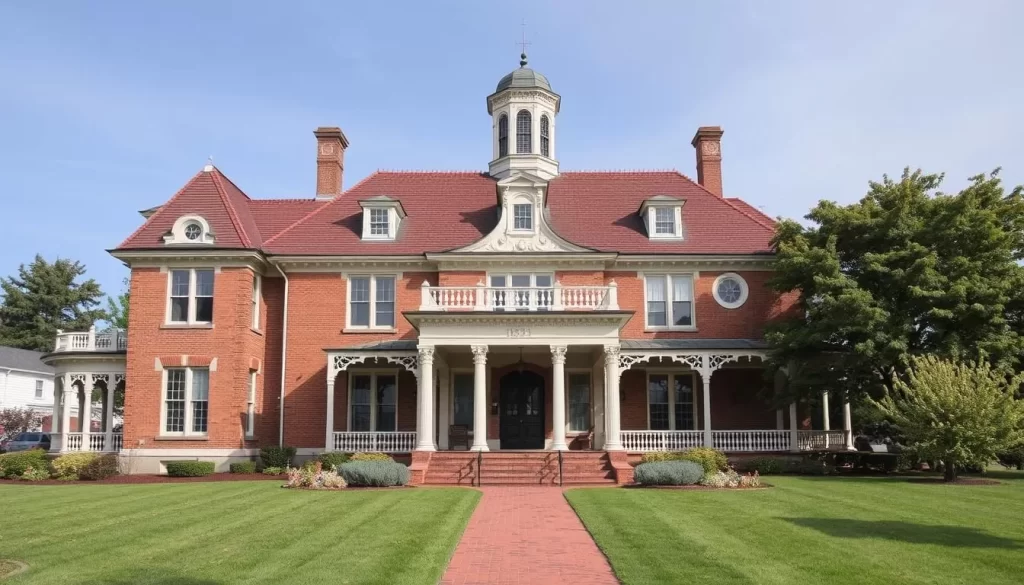
Tucked away in the historic James Arnold Mansion, the New Bedford Museum of Glass is a hidden gem waiting to be discovered. Once hidden in the back of the former Wamsutta Textile Mill, the museum has moved into new digs at the Wamsutta Club, showcasing the city’s significant but often overlooked glassmaking heritage.
Rare Glass Collections and Exhibits
The New Bedford Museum of Glass boasts an impressive collection of glass pieces from ancient to contemporary times. You’ll marvel at the diverse exhibits, including rare and valuable examples from around the world. One of the museum’s highlights is its extensive display of Vaseline Glass, made with uranium, which glows green under ultraviolet light in a dark room. The collection also features masterpieces by renowned glass artists and manufacturers such as Steuben, Orrefors, Tiffany, and Dale Chihuly.
The Vaseline Glass display is particularly noteworthy, accompanied by an active Geiger counter that demonstrates its radioactive properties. This unique exhibit adds an educational dimension to the museum, making it a fascinating visit for both glass enthusiasts and those interested in science.
Historical Significance of Glassmaking in New Bedford
Glassmaking was a significant industry in New Bedford during the 1860s, with the city producing fine tableware, quality cut glass, and elaborate chandeliers. The museum showcases this aspect of New Bedford’s industrial heritage, highlighting the skills in precision and craftsmanship that contributed to the city’s success in multiple fields. By preserving and presenting this specialized history, the New Bedford Museum of Glass offers visitors a deeper understanding of the city’s cultural and industrial past.
The museum’s efforts to preserve this aspect of New Bedford’s history make it an essential visit for anyone interested in the city’s rich cultural offerings. As you explore the museum, you’ll gain a new appreciation for the art and industry of glassmaking and its role in shaping New Bedford’s identity.
Buttonwood Park Zoo

As one of the Best Small Zoos in America, Buttonwood Park Zoo in New Bedford is a place you won’t want to miss. The zoo is home to a variety of animal species, providing an intimate and educational wildlife experience. You can spend a day exploring the different exhibits, getting up close to native New England wildlife and exotic species in naturalistic habitats.
Animal Exhibits and Red Pandas
The zoo is particularly famous for its red pandas, including Jacob, who was born on June 20, 2017, at the Cleveland Metroparks Zoo. You can observe Jacob and the two newer red panda additions on the zoo’s PandaCam if you can’t visit in person. The animal exhibits at Buttonwood Park Zoo are designed to educate and engage visitors of all ages, promoting conservation awareness and appreciation for wildlife.
The zoo’s manageable size allows you to complete your visit in 2-3 hours, making it perfect for families with young children. You can explore the various exhibits, learn about the animals, and enjoy the surrounding Buttonwood Park with its walking paths, playgrounds, and picnic areas.
Family-Friendly Activities
Buttonwood Park Zoo offers a range of family-friendly activities and educational programs designed to engage visitors while promoting conservation awareness. You can participate in these activities, enjoy the zoo’s surroundings, and make the most of your visit. The zoo’s commitment to providing both entertainment and education while maintaining high standards of animal care makes it a standout destination in New Bedford.
When you visit Buttonwood Park Zoo, you’re not just spending a day at a zoo; you’re experiencing a community-driven institution that is dedicated to conservation and education. You can learn about the zoo’s conservation efforts and its participation in species survival plans for endangered animals, adding depth to your visit.
Portuguese Heritage and Cuisine
As you explore New Bedford, you’ll discover the profound impact of Portuguese culture on its food, traditions, and community. The city’s history is deeply intertwined with the stories of Portuguese immigrants who came to New Bedford during the whaling era, bringing with them their rich cultural heritage and culinary traditions.
The influence of Portuguese cuisine is evident in the variety of dishes available throughout the city. You can find everything from traditional malasadas (sweet fried dough) to chourico (spicy sausage), reflecting the Azorean and mainland Portuguese culinary traditions.
Portuguese Restaurants and Specialties

New Bedford is home to numerous Portuguese restaurants that serve authentic and delicious dishes. Antonio’s and Alianca are two local favorites where you can enjoy traditional Portuguese cuisine featuring meat, seafood, and potatoes in flavorful sauces. These restaurants offer a casual and reasonably priced dining experience, making them perfect for visitors looking to sample the local culture.
Some must-try Portuguese specialties include bacalhau (salt cod), kale soup, and various pastries. These dishes not only reflect the culinary traditions of Portugal but also highlight the adaptability and resilience of the Portuguese community in New Bedford.
When visiting New Bedford, be sure to explore the local bakeries, which offer a range of traditional Portuguese baked goods, including sweet bread and pastries. These bakeries are an integral part of the community’s food culture and provide a delicious way to experience the city’s Portuguese heritage.
Cultural Influence on the City
The Portuguese community has had a lasting impact on New Bedford’s cultural landscape. The city’s architecture, place names, businesses, and community organizations all reflect the influence of Portuguese culture. This is particularly evident during the annual Feast of the Blessed Sacrament, held in August, which is the largest Portuguese feast in the world.
The transition of the Portuguese community from whaling to fishing and other industries demonstrates their ability to maintain their cultural identity while adapting to economic changes. Multiple generations of Portuguese-Americans have preserved their heritage, contributing to New Bedford’s diverse cultural fabric.
As you explore New Bedford, you’ll notice the many ways in which Portuguese culture is woven into the city’s identity. From the names of streets and businesses to the cultural events and traditions, the influence of Portugal is palpable, making New Bedford a unique and fascinating place to visit.
Seafood Dining Experiences
From the dock to your plate, New Bedford’s seafood is as fresh as it gets. The city’s status as America’s most profitable fishing port translates directly to the exceptional quality of seafood served in local restaurants. You can indulge in New Bedford’s world-class seafood dining scene, where the day’s catch often travels just yards from boat to plate.
Fresh Scallops and Local Catches
Sample the city’s famous sea scallops, which New Bedford fishermen harvest in greater quantities than anywhere else in America, making the port the “Scallop Capital of the World.” Merrill’s is a great place to try these local catches, with its proximity to the fishing fleet offering a unique dining experience. You can watch scallop boats unloading their catch while enjoying your meal with spectacular harbor views.
Right across the parking lot from Fairfield Inn and Suites, diners at Merrill’s can observe the cockpits of scallop boats at the dock while eating. The views are fine, but the food is, too. Honestly, how can you go wrong with any scallop dish when the source of said shellfish is right out the window?
- Indulge in New Bedford’s world-class seafood dining scene
- Sample the city’s famous sea scallops
- Dine at waterfront restaurants like Merrill’s
- Experience the exceptional freshness and quality of seafood
Waterfront Dining Options
Casco Brewers Kitchen and Bar offers sushi, seafood, and BBQ right on the water. It is energetic with a great view and often has live music. You can enjoy sunset dining along the waterfront, where clear evenings cast a rosy-gold hue over the fishing fleet.
Other waterfront dining options offer a range of experiences, from casual clam shacks to upscale dining establishments, all showcasing the bounty of the Atlantic Ocean. You can try Portuguese-influenced seafood preparations that reflect the city’s cultural heritage, offering unique flavors you won’t find elsewhere.
- Visit Casco Brewers Kitchen and Bar for a lively atmosphere
- Enjoy sunset dining along the waterfront
- Choose from casual to upscale dining establishments
- Learn about sustainable fishing practices from knowledgeable staff
In New Bedford, you can experience the best of seafood dining. The city’s rich fishing heritage and cultural influences come together to create a unique dining experience that’s hard to find anywhere else. Whether you’re in the mood for a casual meal or a more upscale dining experience, New Bedford’s seafood scene has something for everyone.
Craft Breweries and Local Drinks
Craft breweries have become an integral part of New Bedford’s identity, offering a blend of local flavors and literary charm. As you explore the city, you’ll find that these breweries not only serve great beer but also pay homage to New Bedford’s rich history and cultural heritage.
Moby Dick Brewing Co.
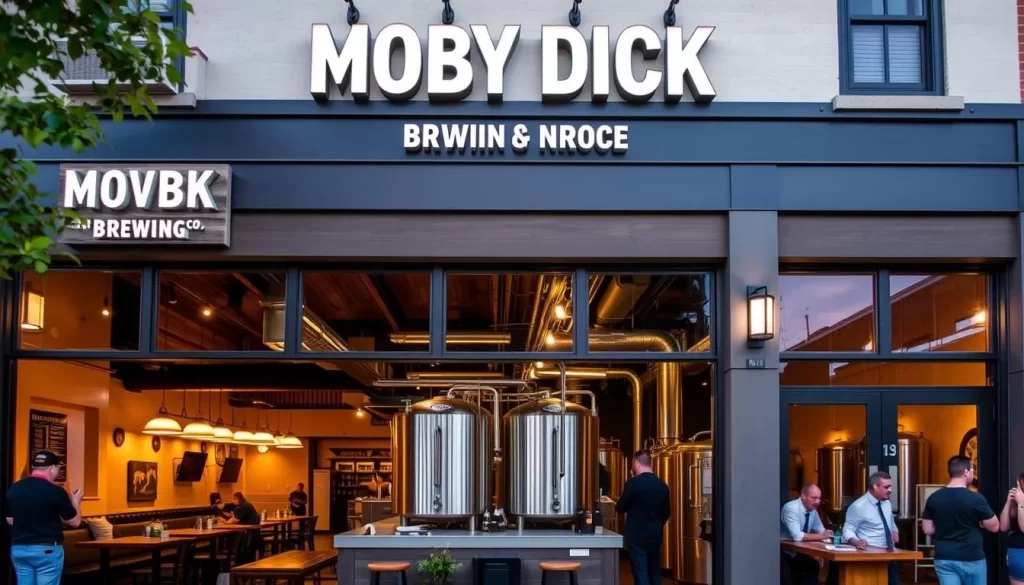
Moby Dick Brewing Co. is a standout among New Bedford’s craft breweries, located just a block from the docks. This literary-themed brewery was opened in March 2017 by seven co-owners who saw an opportunity to blend their love of literature, cuisine, and craft beer. The brewery’s namesake beers, such as Ishm-ale (Red Ale), Simple Sailor (Lager), Quick Eternity (West Coast IPA), and Sailor’s Delirium (Double IPA), are inspired by Herman Melville’s novel, Moby Dick.
The brewery itself is housed in a historic building that was once a chandlery, a marine electronics store, and then a fruit wholesaler. You can still see remnants of its past, like the banana hooks in the basement. The beer is top-notch, fresh, and tasty, and pairs well with their menu items, particularly the Fish and Chips or Fish Tacos, which feature light, airy fried cod.
Visitors can enjoy a tour of the brewery, sample their creative brews, and learn about the building’s fascinating history. Whether you’re a beer enthusiast or just looking for a unique dining experience, Moby Dick Brewing Co. is a must-visit destination in New Bedford.
Other Local Breweries and Bars
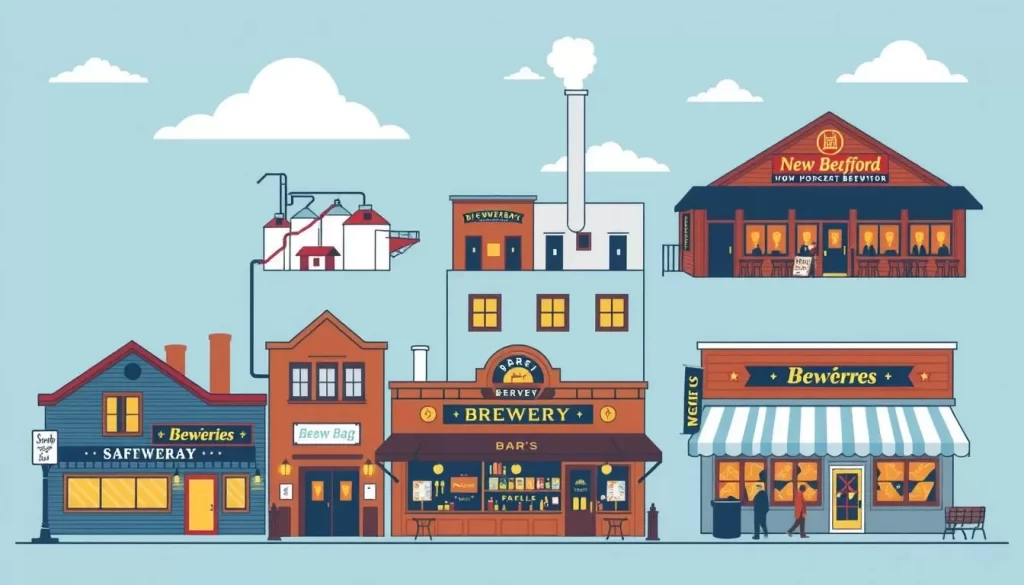
Beyond Moby Dick Brewing Co., New Bedford is home to a variety of other local breweries and bars that are worth exploring. Many of these establishments are located in historic buildings with their own maritime history, adding to the city’s charm. You can discover unique beers and craft cocktails made with locally-sourced ingredients, reflecting New Bedford’s culinary creativity.
One such spot is 222 Union Restaurant at the New Bedford Harbor Hotel, where the head bartender takes craft drafts seriously, offering unique beers you won’t find elsewhere. As you explore the historic district, you’ll come across other local bars and pubs, each with its own character and story to tell.
The growing craft beverage scene in New Bedford is not only a reflection of the city’s revitalization but also a way to honor its literary and maritime heritage. By visiting these breweries and bars, you’re supporting local businesses and experiencing the best of what New Bedford has to offer.
Shopping in New Bedford
Downtown New Bedford is abuzz with shopping activity, featuring everything from vintage finds to contemporary fashion. As you stroll through the historic streets, you’ll discover a variety of unique shops and boutiques that showcase the city’s rich cultural heritage.
Downtown Boutiques and Art Galleries
Downtown New Bedford is home to a diverse range of boutiques and art galleries. You can explore stores like Calico Boutique, which offers the latest ladies’ fashions, one-of-a-kind accessories, and “Neue Beige” (New Bedford in Portuguese) t-shirts. The Drawing Room, owned by architect Anthi Frangiadis, is another must-visit destination, featuring ceramics, jewelry, paintings, and distinctive bronze doorknockers.

Alison Wells Gallery is also worth a visit, showcasing vibrant island colors in her paintings and hosting guest exhibitions, mixed media shows, and art classes. For those looking for affordable craft jewelry, BeJeweled offers unique pieces at prices lower than you’d pay in larger cities.
Antique Shops and Souvenirs
New Bedford is also known for its antique shops, which specialize in maritime artifacts, Victorian-era items, and other collectibles that reflect the city’s rich history. As you wander the cobblestone streets of the Historic District, be sure to stop into as many of the art galleries and studios as you can, where you can often meet the artists and watch them work.
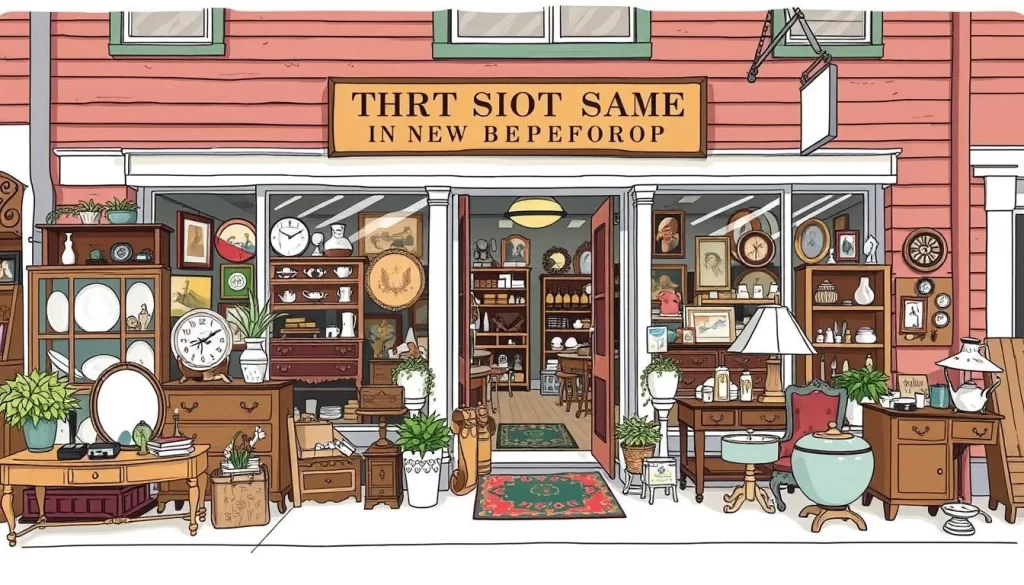
Some of the top things to do in New Bedford include browsing nautical-themed gift shops for unique souvenirs, exploring the city’s historic mansions, and visiting the New Bedford Whaling Museum. By shopping at independent businesses, you’re supporting the local economy and contributing to the city’s cultural renaissance.
Whether you’re looking for a special souvenir or just want to experience the local culture, New Bedford’s shopping scene has something for everyone. Take your time to explore the area, and you’ll find that this charming town has a lot to offer.
Day Trips from New Bedford
New Bedford serves as an ideal starting point for discovering the charm of the South Coast and beyond. With its rich history, cultural attractions, and convenient location, you can easily explore the surrounding area and enjoy all that New England has to offer.
Ferry to Martha’s Vineyard and Nantucket
One of the most popular day trips from New Bedford is taking the ferry to Martha’s Vineyard or Nantucket. The Seastreak Ferry complex, located on the waterfront, offers convenient services to these island destinations. You can catch the ferry from Pier 3, making it easy to plan your day trip.
Impressively, Seastreak even operates ferries from NYC and NJ to the MA islands, making New Bedford a significant hub for island-hopping. Many visitors come to New Bedford just to catch the ferry, but they soon discover that the city is worth spending more time in.
Seastreak Ferry Schedule
To plan your trip, check the Seastreak Ferry schedule in advance. The ferry runs regularly, allowing you to enjoy a relaxing day trip to Martha’s Vineyard or Nantucket. You can visit the islands, enjoy their beautiful beaches, and explore their charming towns.
Nearby Coastal Towns
In addition to island-hopping, New Bedford is also a great base for exploring nearby coastal towns. Fairhaven, connected to New Bedford by a unique swing truss bridge opened in 1900, is a must-visit destination. You can also explore Westport and Dartmouth, each with its own charm and attractions.
Other nearby destinations include Fall River, known for the infamous Lizzie Borden House and maritime history, including Battleship Cove. You can also visit the picturesque towns of Cape Cod, which offer beautiful beaches, lighthouses, and quintessential New England scenery, all within driving distance.
By using New Bedford as your base, you can experience the best of the South Coast region, from its historic sites to its beautiful coastal area. Whether you’re looking for a relaxing day trip or a longer stay, New Bedford and its surroundings have something to offer.
Conclusion: Planning Your Visit to New Bedford
Planning a visit to New Bedford promises an enriching experience filled with history, art, and natural beauty. As you’ve seen, there’s a plethora of things to do and see in this charming town.
To make the most of your trip, consider allocating a full day or even a weekend to explore the area’s rich offerings. Staying at the New Bedford Harbor Hotel is highly recommended, as it offers harbor views and easy access to the historic district.
Here are some tips to enhance your visit: Time your trip to coincide with special events like AHA! Nights or the Working Waterfront Festival. Start your journey at the New Bedford Whaling National Historical Park Visitor Center to get oriented and learn about available tours and programs. Be sure to wear comfortable walking shoes for exploring the cobblestone streets and waterfront areas.
New Bedford caters to a wide range of interests, from history buffs to art enthusiasts and families. Whether you’re interested in maritime history, contemporary art, or simply enjoying local cuisine, New Bedford has something for everyone.
By planning your visit thoughtfully, you’ll leave with a deeper appreciation for this historic city that has beautifully preserved its past while evolving into a vibrant cultural destination.
The above is subject to change.
Check back often to TRAVEL.COM for the latest travel tips and deals.
